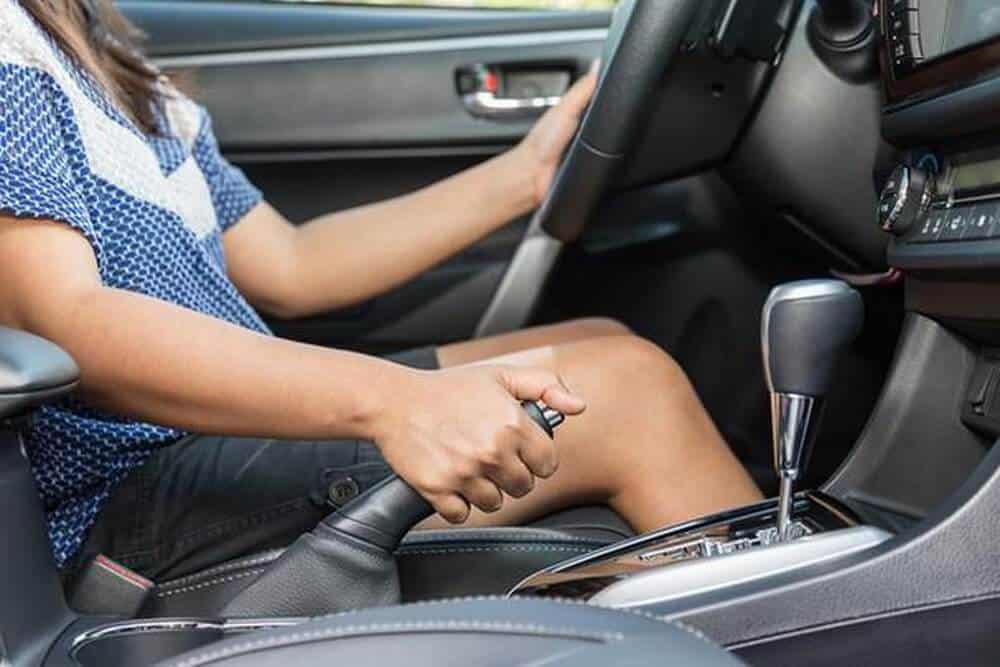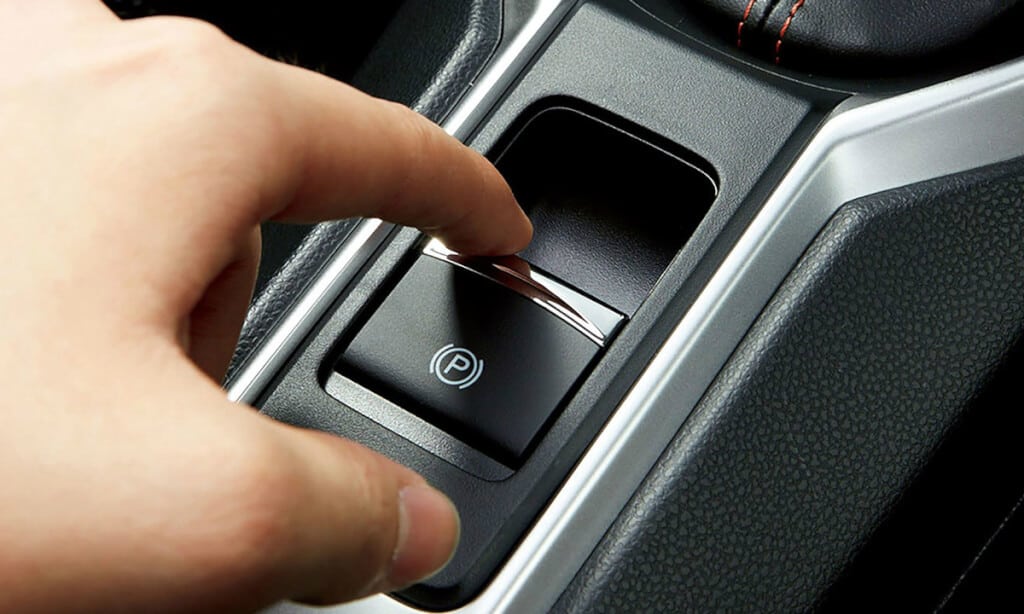Needless to say, everyone knows that car brakes are really a very important part. Brakes help cars stop on steep roads, up and down bridges, park in a stable position or to handle emergencies.
Parking brake is called auxiliary brake (emergency brake), when the foot brake can not be used to use the hand brake but does not mean that it is less important. In case of emergency braking, the driver will use both hand brake and foot brake.

On the market today there are many types of automobile handbrake but the most popular are mechanical and electronic handbrake. To distinguish these two types of handbrake, you go together Thanh Phong Auto Refer to the article below.
- Hand brake lever: popularly used for passenger cars and commercial vehicles.
- Hand brake pull bar: Used for some commercial vehicles.

Whether handbrake lever or tow bar handbrake, the principle of operation is as follows:
To keep the car from drifting, you just need to pull the handlebar backwards with the lever system. The pin will be pulled back and make the brake pads hard on the moving shaft unit. At that time, the cable pushes the brake pads and friction brake pads will be pulled with the brake drum.
To release the parking brake to its original position, press your finger on the button on the top of the brake lever to release the toad mechanism and the brake lever forward. The brake pads will then be pulled back to their original positions thanks to the springs. The gap between the brake pads and the drum is governed by the adjustment screw.
Recommended to see: 7 things to keep in mind when fixing a car brake
Electronic handbrake uses DC motor for the rear wheels of cars to hold and release the brakes. The brake control box receives the signal from the driver and transmits it to the electric motor.

The working principle of electronic handbrake:
Unlike using mechanical handbrake, when braking, you only need to step on the front foot brake and pull the "P"-shaped brake control lever in the circle.
To release the electronic handbrake (Unlock), you also do the same as the first step is to apply the brake pedal and push down the control brake lever.
Not only that, the electronic handbrake can be automatically unlocked when the driver pedaled on the gas pedal or in reverse gear.
3. What are the advantages and disadvantages of handbrake types?
| Compare | Mechanical hand brake | Electronic handbrake |
| Advantages |
- Easy to repair or assemble thanks to the simple design. - Low cost of part replacement and repair. - The usage time of the parts is longer. |
- Avoid braking, jamming. – Compact and takes up less car space.+Luxury and comfort. - Easy to operate. - When you forget to release the brake, it is still guaranteed to be safe. |
| Disadvantages |
- Take up more space in the car. - More difficult to manipulate. - Brake lock will occur when there is no periodic maintenance. |
- Short use time. - Repair costs as well as high part replacement costs. - There is a slight vibration on the brake pedal when moving. The electronic brake cannot be used when the battery is dead. |
The advent of electronic handbrake is to improve the disadvantages of mechanical handbrake. Therefore, electronic handbrake is increasingly used popularly in current cars.
Service Test, Maintenance And Repair Brake System In Thanh Phong
Thanh Phong Auto hopes through this article you have a better understanding of mechanical and electronic handbrake. If you want to repair, maintain and renew your car, please contact Thanh Phong. Thanh Phong Auto will definitely bring you a most satisfied service.
See More Great Articles At General Blog Of Thanh Phong:
Share Things To Note When Repairing - Replacing Car Gearbox
Cars Care Service Price Sheet At Thanh Phong Auto HCMC VietNam:
* The cars that we have mechanics: Mercedes, BMW, Audi, Lexus, Toyota, Honda, Mazda, Mitsubishi, Kia, Daewoo, Hyundai,Ford, Nissan, Volkswagen, Porsche, Chevrolet, Rand Rover, Innova, Fortuner, Vios, Fiat, Bugatti, Ferrari, Bentley, Hummer , Chrysler, Dodge, Renault, Cadillac, Volvo, Subaru, Daihatsu, Ssangyong, Roll-Royce, Peugeot, Smart Fortwo, Tobe M'car, Luxgen, Zotye, Haima, Geely, Baic, Hongqi, Cmc, Mini Cooper, Buick, Opel, Acura, Aston Martin, Vinfast, TQ Wuling.
To keep your vehicle running properly at all times, we offer a number of services that are carried out by our certified, expert auto service and repair technicians who have years of experience performing everything from oil changes to a complete engine overhaul.
LEAVE COMMENT